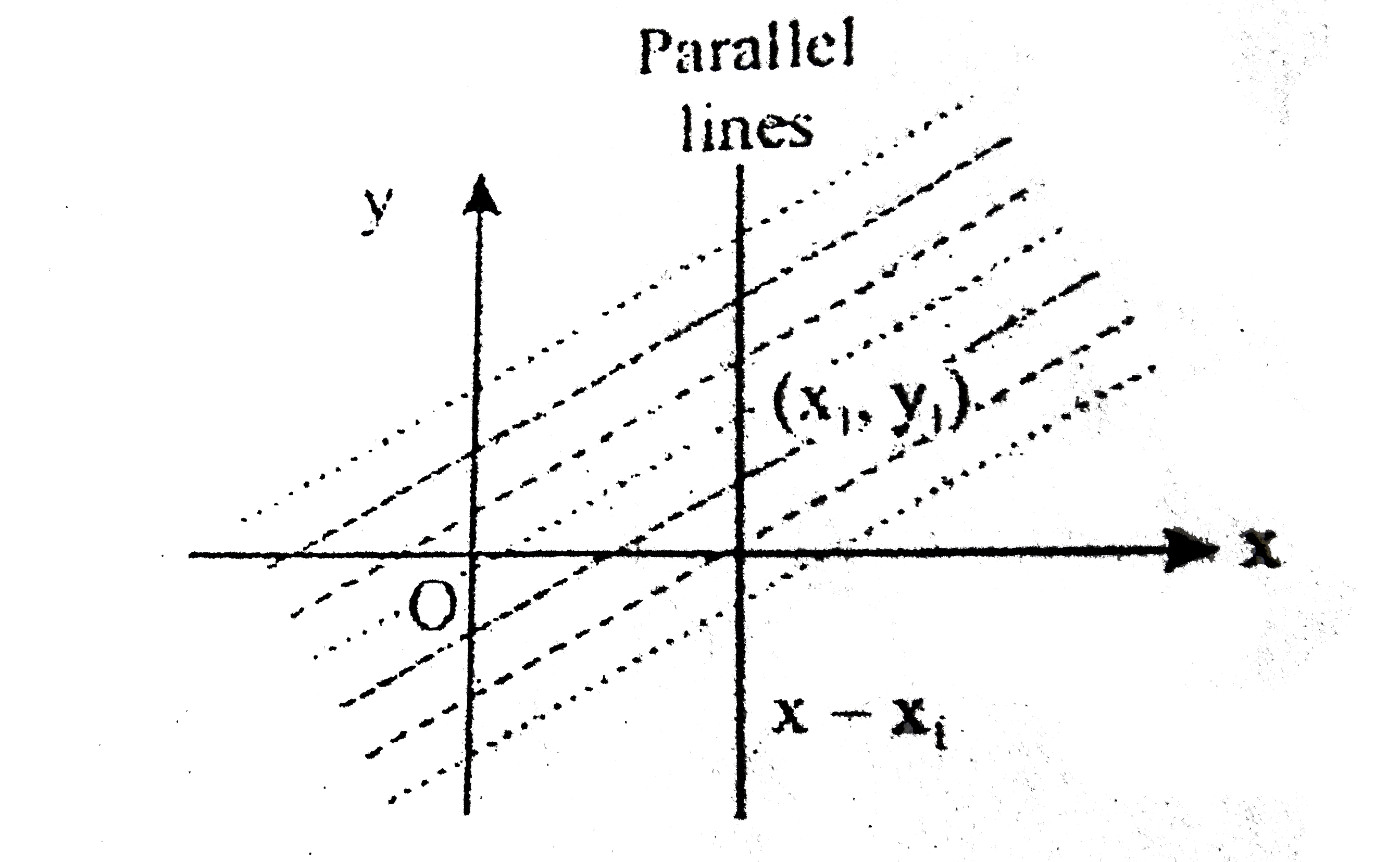Consider the equation y−y1=m(x−x1). If m and different lines are drawn for different values of y1, then :
the lines will pass through a fixed point
there will a set of parallel lines
all the lines intersect the line x=x1
all the lines will be parallel to the line y=x1
The correct Answer is:B, C
Lines (y−y1)=m(x−x1) in passing through a fixed point (x1.y1) & having slope m then if m and x1 are fixed then line will set of parallel lines which are intersects the lines x=x1.

Topper's Solved these Questions
- BOOK - RESONANCECHAPTER - TEST PAPERSEXERCISE - Math105videos
TEST PAPERS
- BOOK - RESONANCECHAPTER - TEST PAPERSEXERCISE - MATHEMATICS263videos
TEST PAPERS
- BOOK - RESONANCECHAPTER - TEST PAPERSEXERCISE - PART - I MATHEMATICS SEC - 21videos
TEST PAPERS
- BOOK - RESONANCECHAPTER - TEST PAPEREXERCISE - CHEMISTRY37videos
TEST PAPER
- BOOK - RESONANCECHAPTER - TEST SERIESEXERCISE - MATHEMATICS131videos
TEST SERIES
Similar Questions
Consider the equation y−y1=m(x−x1) . If mandx1 are fixed and different lines are drawn for different values of y1, then the lines will pass through a fixed point there will be a set of parallel lines all the lines intersect the line x=x1 all the lines will be parallel to the line y=x1
View SolutionConsider the differential equation y2dx+(x−1y)dy=0 if y(1)=1 then x is
View Solution
Knowledge Check
- Question 1 - Select One
Consider the equation y−k=m(x−h). In this equation, if m and h are fixed and different lines are drawn for different value of k, then
Athe lines will pass through a single pointBthere will be just two linesCthere will be a set of parallel linesDNone of these - Question 2 - Select One
Consider the differential equation y2dx+(x−1y)dy=0 if y(1)=1 then x is
A1−1y+e1/yeB4−2y−e1/yeC3−1y+e1/yeD1+1y−e1/ye - Question 3 - Select One
Consider the differential equation, ydx−(x+y2)dy=0. If for y=1, s takes value 1, then the value of x when y=4 is
A9B16C36D64
Consider the differential equation ydx−(x+y2)dy=0. If for y=1,x takes value 1, then value of x when y = 4, is
View SolutionConsider the differential equation y2dx+(x−1y)dy=0. If y(1)=1, then x is given by:
View SolutionConsider the differential equation y2dx+(x−1y)dy=0. If y(1)=1, then x is given by:
View SolutionThe equation of line whose midpoint (x1,y1) is in between the axes, is
View SolutionConsider a circle x2+y2+ax+by+c=0 lying completely in the first quadrant .If m1 and m2 are maximum and minimum values of y/x for all ordered pairs (x,y) on the circumference of the circle, then the value of (m1+m2) is
View Solution

